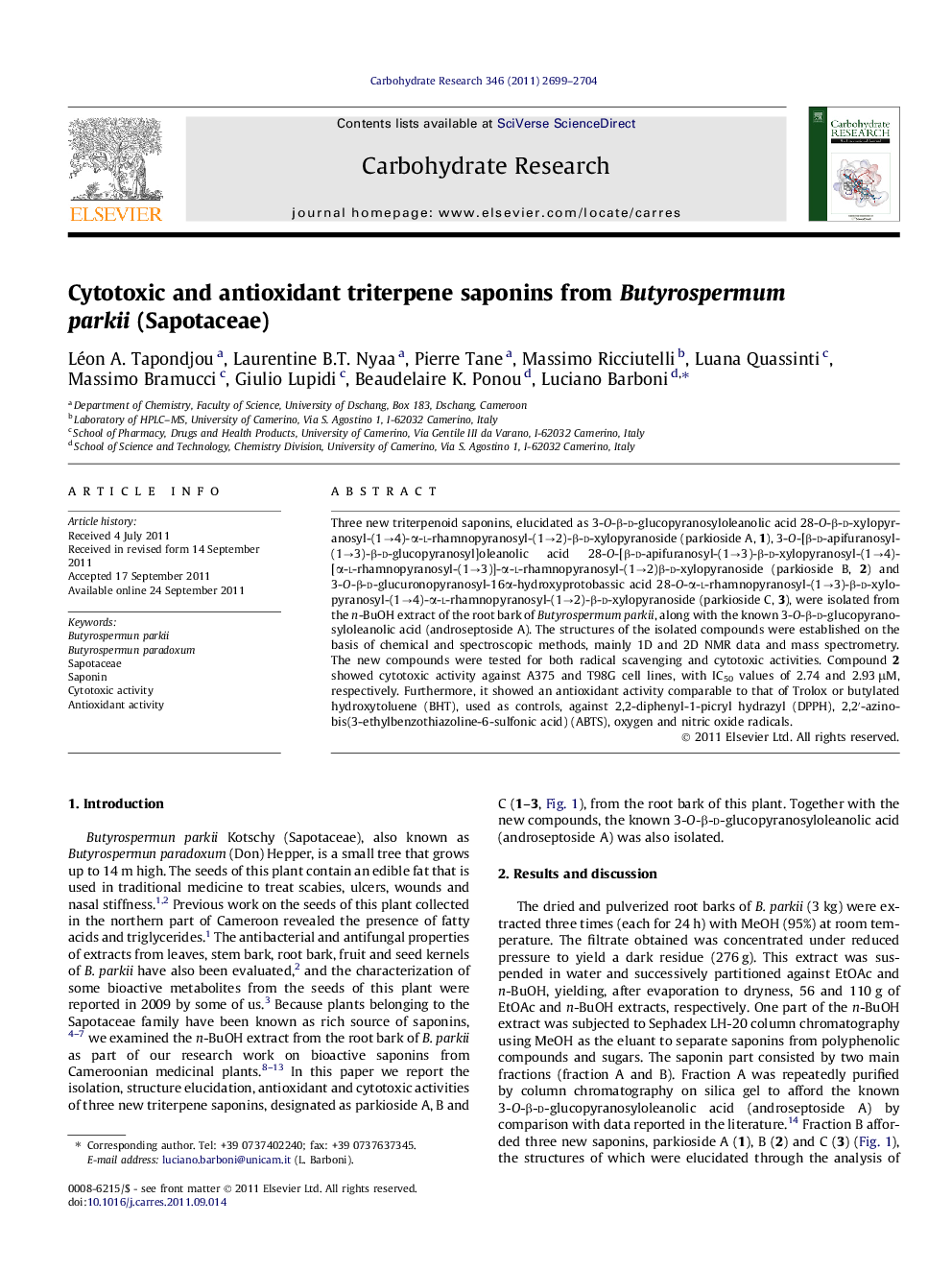| Article ID | Journal | Published Year | Pages | File Type |
|---|---|---|---|---|
| 1390424 | Carbohydrate Research | 2011 | 6 Pages |
Three new triterpenoid saponins, elucidated as 3-O-β-d-glucopyranosyloleanolic acid 28-O-β-d-xylopyranosyl-(1→4)-α-l-rhamnopyranosyl-(1→2)-β-d-xylopyranoside (parkioside A, 1), 3-O-[β-d-apifuranosyl-(1→3)-β-d-glucopyranosyl]oleanolic acid 28-O-[β-d-apifuranosyl-(1→3)-β-d-xylopyranosyl-(1→4)-[α-l-rhamnopyranosyl-(1→3)]-α-l-rhamnopyranosyl-(1→2)β-d-xylopyranoside (parkioside B, 2) and 3-O-β-d-glucuronopyranosyl-16α-hydroxyprotobassic acid 28-O-α-l-rhamnopyranosyl-(1→3)-β-d-xylopyranosyl-(1→4)-α-l-rhamnopyranosyl-(1→2)-β-d-xylopyranoside (parkioside C, 3), were isolated from the n-BuOH extract of the root bark of Butyrospermum parkii, along with the known 3-O-β-d-glucopyranosyloleanolic acid (androseptoside A). The structures of the isolated compounds were established on the basis of chemical and spectroscopic methods, mainly 1D and 2D NMR data and mass spectrometry. The new compounds were tested for both radical scavenging and cytotoxic activities. Compound 2 showed cytotoxic activity against A375 and T98G cell lines, with IC50 values of 2.74 and 2.93 μM, respectively. Furthermore, it showed an antioxidant activity comparable to that of Trolox or butylated hydroxytoluene (BHT), used as controls, against 2,2-diphenyl-1-picryl hydrazyl (DPPH), 2,2′-azino-bis(3-ethylbenzothiazoline-6-sulfonic acid) (ABTS), oxygen and nitric oxide radicals.
Graphical abstractFigure optionsDownload full-size imageDownload as PowerPoint slideHighlights► The root bark of Butyrospermum parkii, a plant used in the traditional medicine, was studied. ► Three new triterpenoid saponins were isolated and elucidated. ► One of the new compounds showed a remarkable antiploriferative activity. ► As observed by other authors, the antiploriferative activity could be related to the presence of apiose units.
